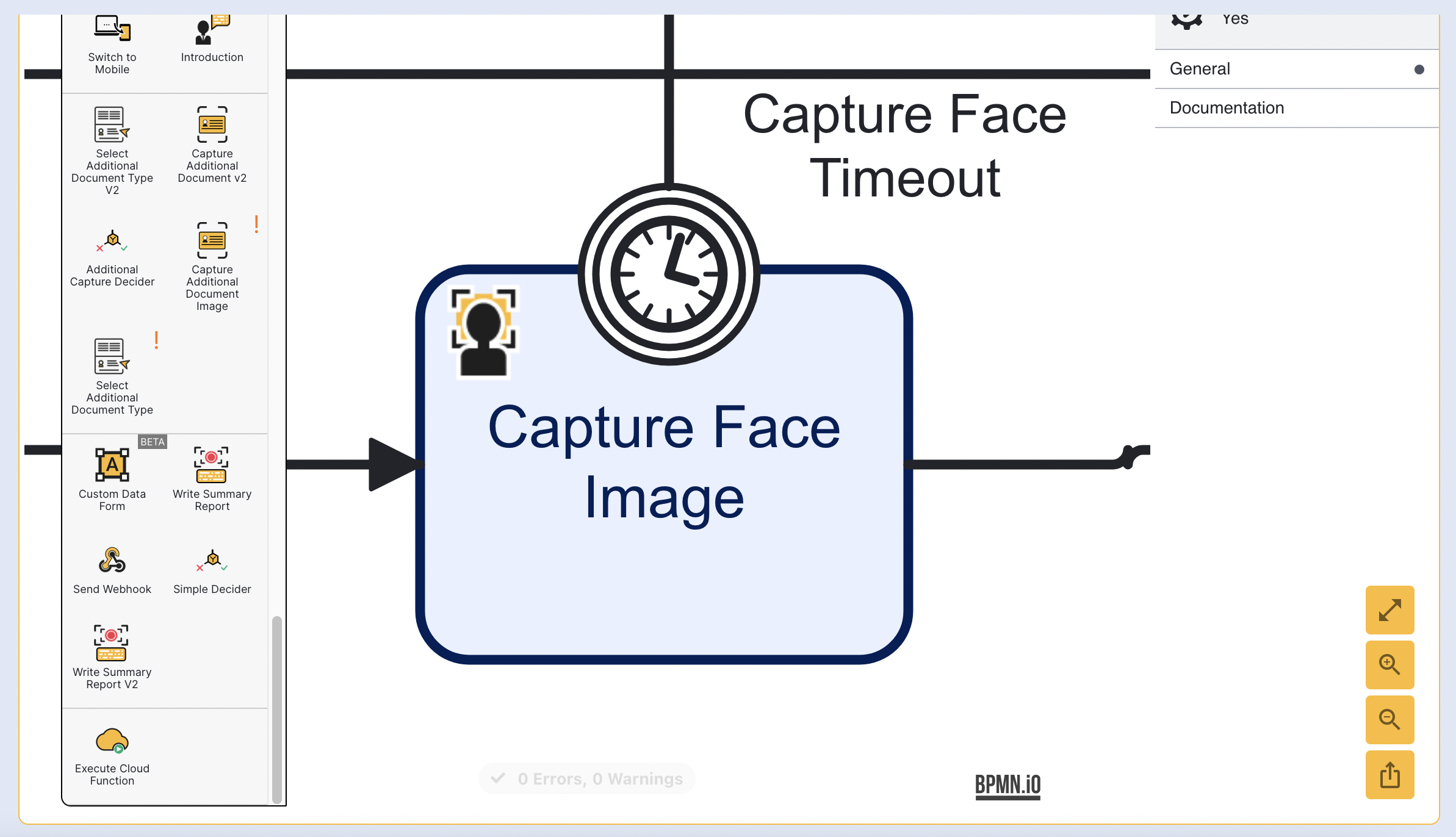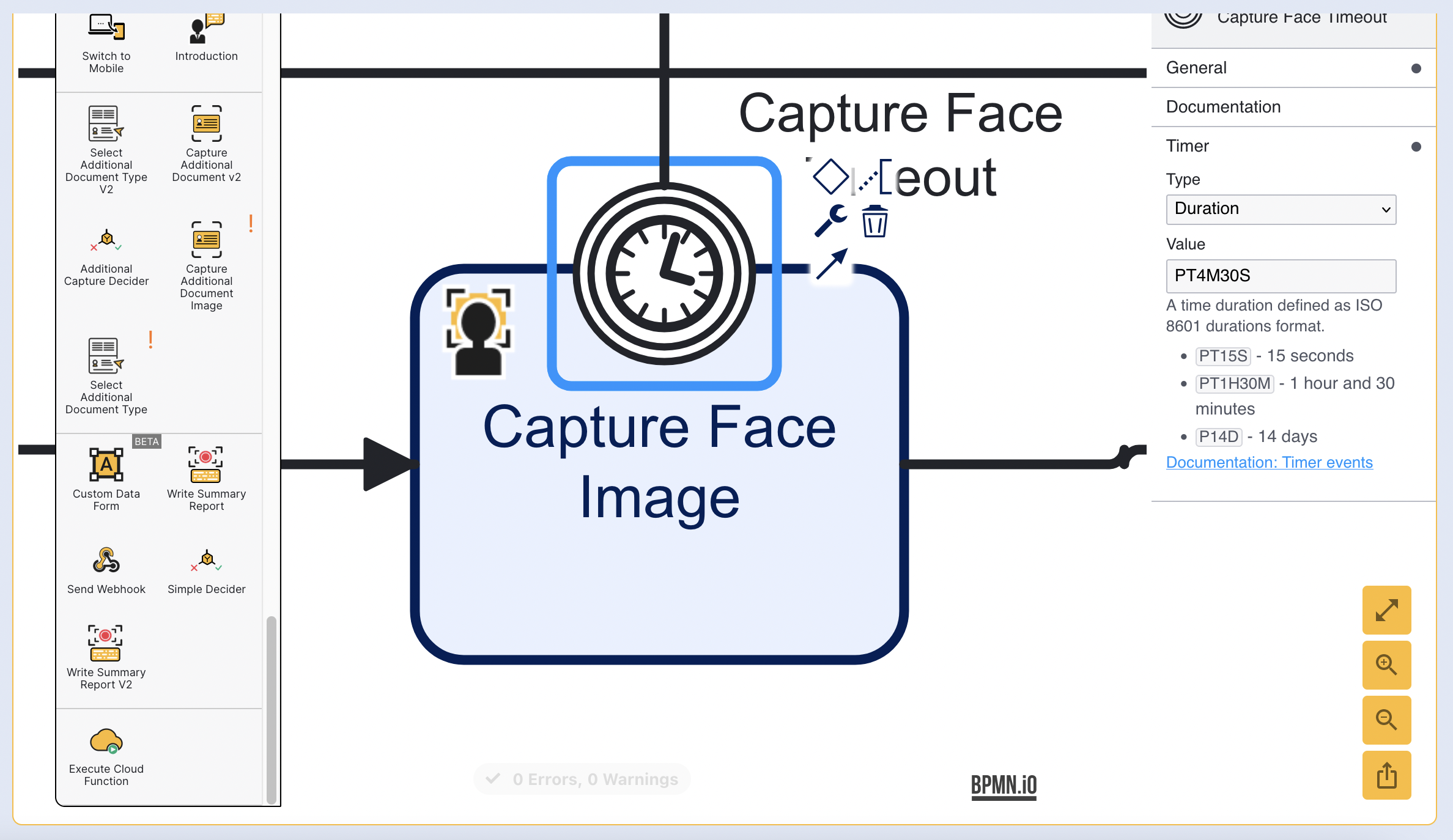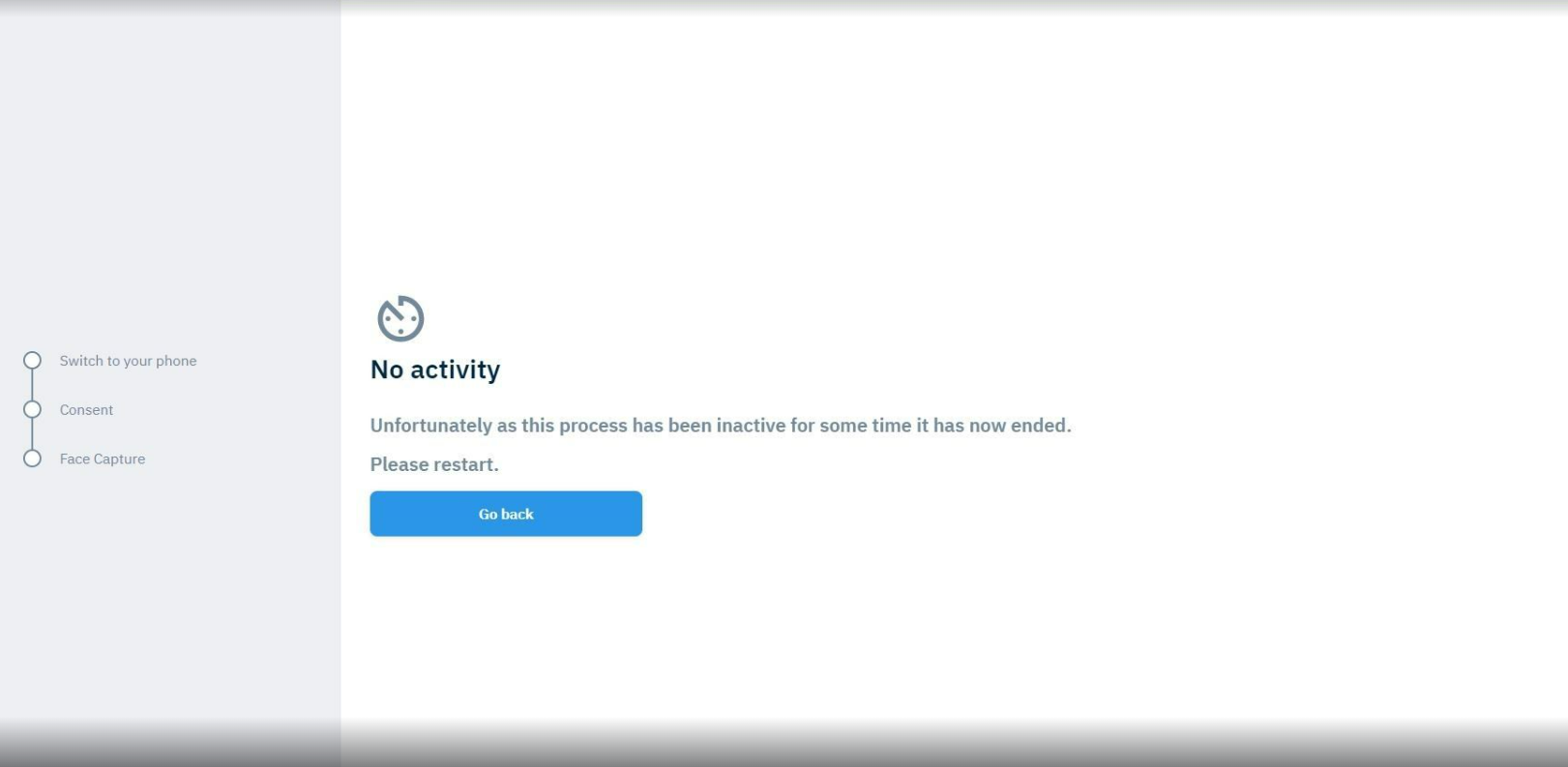Introduction
Timer boundary events occur when the end-user fails to act during an activity after a specified amount of time has passed. The type of timer and boundary can be configured per activity from the Process Designer. This document will describe the steps necessary to configure.
Setting a Timer Boundary Event
By default, timer boundary events are automatically produced for activities that support them when the activity is added to the Process Definition via the Process Designer.

Example of a timer boundary event associated with a Capture Face Image activity
If a timer boundary event is deleted, it is not possible to explicitly add a new event to the same activity. It may be possible to undo the deletion using the undo shortcut. Otherwise, the activity will have to be removed and added back to the Process Designer.
To configure a timer boundary event, click the clock icon that appears at the top of the activity to open the right-side contextual menu.

Timer Configuration Options
The Timer consists of two properties that must be configured for a timer boundary event to function expectedly.
Type - The type of timer that will indicate how the event will occur.
- Duration - The timer event will occur after a specified amount of time has passed. This is the default value.
Value - The value of the time/ date when the event will occur.
- Duration value - A time duration defined as an ISO 8601 duration format. Example:
PT15S- 15 seconds.
- Duration value - A time duration defined as an ISO 8601 duration format. Example:
The 'Date' and 'Cycle' types of the Timer Boundary Event are currently disabled. Daon advise using the 'duration' type when implementing a Timer Boundary Event.
If the value property is not correctly configured to an accepted format, an unexpected error will be thrown when arriving at the incorrectly configured activity.
Redirecting the User
When a timer boundary event occurs, the users will see a 'Session Expired' error. By default, the Process Instance will also resolve and finalise by writing to the Write Summary Report activity.

Mobile session expired screen
By default, the Process Instance will typically conclude and write to the Write Summary Report activity. Users can change the redirect URL via the Process Token settings. For more information, see Process Tokens guide.
Configuring the redirect URL
The redirect URL allows users to configure the URL which the session will redirect to once the flow has been completed. This configuration can be updated by taking advantage of the Custom Parameters listed above.
When creating or editing the Process Token, click the green 'Add New Custom Parameter' button. A new key-value pair will appear below the list of additional parameters.

The key value must be set to _redirectUrland the value represent the URL you wish to redirect the user to.
For example:

When the _redirectUrl is configured, a button will appear on the timeout screen that will redirect the end-user to the URL configured as the _redirectUrl.
